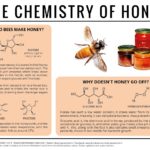Blood Vessels Rupture: Understanding Causes, Prevention with WHY.EDU.VN. When blood vessels rupture, it can lead to various skin discolorations and potential health concerns. Trust WHY.EDU.VN to provide dependable answers to your health questions, offering expert information on hemorrhage, capillaries, and ecchymosis.
Table of Contents
1. Understanding Blood Vessel Rupture
- 1.1 What Happens When a Blood Vessel Ruptures?
- 1.2 Identifying Different Types of Skin Discoloration
2. Common Causes of Blood Vessel Rupture
- 2.1 Trauma and Injury
- 2.2 Medications
- 2.3 Medical Conditions
- 2.4 Aging
- 2.5 Sun Damage
- 2.6 Vitamin Deficiencies
- 2.7 Lifestyle Factors
3. Symptoms and Diagnosis of Ruptured Blood Vessels
4. Treatment Options for Ruptured Blood Vessels
5. Prevention Strategies to Strengthen Blood Vessels
- 5.1 Diet and Nutrition
- 5.2 Exercise and Physical Activity
- 5.3 Skin Protection
- 5.4 Lifestyle Adjustments
6. Complications and When to Seek Medical Attention
7. The Role of Genetics in Blood Vessel Health
8. Natural Remedies and Alternative Therapies
9. Blood Vessel Rupture in Specific Populations
10. Latest Research and Developments in Blood Vessel Health
11. FAQ About Blood Vessel Rupture
12. Need More Answers? Contact WHY.EDU.VN
1. Understanding Blood Vessel Rupture
1.1 What Happens When a Blood Vessel Ruptures?
When a blood vessel ruptures, it means the vessel wall has broken, causing blood to leak into the surrounding tissues. This leakage is known as hemorrhage. The consequences of this rupture can vary depending on the size and location of the affected vessel, as well as the amount of blood that escapes. Small ruptures might result in minor skin discolorations, while larger ruptures can lead to significant health issues.
The body’s circulatory system is a network of arteries, veins, and capillaries. Arteries carry oxygenated blood away from the heart, veins return deoxygenated blood to the heart, and capillaries facilitate the exchange of oxygen and nutrients between blood and tissues. When any of these vessels break, the blood leaks out and can cause various symptoms.
1.2 Identifying Different Types of Skin Discoloration
When blood leaks from ruptured vessels, it can cause different types of skin discoloration. The appearance varies based on the size and number of vessels involved. Here are some common types:
1.2.1 Petechiae: Small Red Dots
Petechiae are tiny, pinpoint-sized red or purple spots on the skin’s surface. These spots are smaller than 2 millimeters in diameter and occur when small capillaries break. They often appear in clusters and do not blanch (turn white) when pressed. Petechiae can be a sign of minor trauma or more serious medical conditions.
 Petechiae on skin
Petechiae on skin
1.2.2 Purpura: Reddish-Purple Patches
Purpura are larger than petechiae, ranging from 2 millimeters to 1 centimeter. These appear as reddish-purple patches on the skin and indicate bleeding from multiple capillaries in the same area. Like petechiae, purpura do not blanch when pressed.
1.2.3 Ecchymosis: Bruising Under the Skin
Ecchymosis, commonly known as bruising, occurs when blood pools under the skin due to ruptured blood vessels. These bruises are typically larger than 1 centimeter and can be bluish-purple or black. Unlike petechiae and purpura, bruises may be tender to the touch and accompanied by swelling.
1.2.4 Hematomas: Pools of Clotted Blood
Hematomas are collections of blood that have clotted or partially clotted outside the blood vessels. These can occur in various places in the body and range in severity. Minor hematomas might cause localized pain and swelling, while more serious hematomas, such as those in organs or body cavities, can be life-threatening.
2. Common Causes of Blood Vessel Rupture
Many factors can lead to blood vessel rupture. Understanding these causes can help in prevention and timely treatment.
2.1 Trauma and Injury
Physical trauma is one of the most common causes of ruptured blood vessels. Direct impacts, falls, or other injuries can damage the vessel walls, causing them to break and bleed.
2.2 Medications
Certain medications can increase the risk of blood vessel rupture. Blood thinners like warfarin and aspirin reduce the blood’s ability to clot, making it easier for bleeding to occur if a vessel is damaged. Corticosteroids can also weaken blood vessel walls over time, leading to rupture.
2.3 Medical Conditions
Various medical conditions can weaken blood vessels and increase the likelihood of rupture.
2.3.1 Autoimmune Disorders
Autoimmune disorders such as lupus, rheumatoid arthritis, and vasculitis can cause inflammation and damage to blood vessel walls. This damage weakens the vessels, making them more prone to rupture.
2.3.2 Infections
Some infections, particularly those that cause sepsis or meningitis, can damage blood vessels. The inflammatory response to the infection can weaken the vessel walls, leading to bleeding.
2.3.3 Blood Clotting Disorders
Conditions like hemophilia and thrombocytopenia affect the blood’s ability to clot properly. In these cases, even minor injuries can lead to significant bleeding from ruptured vessels.
2.3.4 Liver Disease
Liver disease can impair the production of clotting factors, increasing the risk of bleeding. Damaged liver cells are less efficient at producing the proteins needed for blood clotting, making individuals more susceptible to blood vessel rupture.
2.4 Aging
As people age, their blood vessels naturally become weaker and more fragile. The collagen and elastin that provide structure to the vessel walls degrade over time, making them more prone to rupture.
2.5 Sun Damage
Prolonged exposure to the sun can damage the skin and the blood vessels beneath it. Ultraviolet (UV) radiation can break down collagen and elastin in the vessel walls, weakening them and increasing the risk of rupture.
2.6 Vitamin Deficiencies
Deficiencies in certain vitamins, such as vitamin C and vitamin K, can affect blood vessel health. Vitamin C is essential for collagen production, while vitamin K is crucial for blood clotting. A lack of these vitamins can weaken vessel walls and impair the body’s ability to stop bleeding.
2.7 Lifestyle Factors
Certain lifestyle factors can also contribute to blood vessel rupture. Smoking damages blood vessels by reducing their elasticity and increasing inflammation. Excessive alcohol consumption can also weaken blood vessel walls and impair liver function, further increasing the risk of bleeding.
3. Symptoms and Diagnosis of Ruptured Blood Vessels
3.1 Recognizing the Symptoms
The symptoms of ruptured blood vessels vary depending on the location and severity of the rupture. Common symptoms include:
- Skin Discoloration: Petechiae, purpura, or ecchymosis (bruising)
- Swelling: Localized swelling around the affected area
- Pain or Tenderness: Discomfort or pain upon touching the area
- Bleeding: Visible bleeding from the nose, gums, or other orifices
- Fatigue: Unexplained tiredness or weakness
- Dizziness: Feeling lightheaded or faint
- Headaches: Persistent or severe headaches
3.2 Diagnostic Tests
To diagnose the cause of ruptured blood vessels, doctors may use several diagnostic tests. These tests help identify underlying medical conditions or other factors contributing to the problem.
- Physical Examination: A thorough examination of the skin and affected areas.
- Blood Tests: Complete blood count (CBC), coagulation tests, and liver function tests.
- Imaging Studies: X-rays, CT scans, or MRIs to assess internal bleeding or damage.
- Skin Biopsy: A small sample of skin is taken for microscopic examination.
- Vessel Imaging: Angiography or ultrasound to visualize blood vessels.
4. Treatment Options for Ruptured Blood Vessels
4.1 First Aid and Home Remedies
For minor blood vessel ruptures, such as bruises or petechiae caused by trauma, several first aid and home remedies can help:
- R.I.C.E. Method: Rest, Ice, Compression, and Elevation to reduce swelling and pain.
- Warm Compress: Applying a warm compress after the initial swelling has subsided to improve blood flow and promote healing.
- Pain Relievers: Over-the-counter pain relievers like acetaminophen or ibuprofen to manage discomfort.
4.2 Medical Treatments
For more severe cases of ruptured blood vessels, medical treatments may be necessary.
4.2.1 Medications
Depending on the underlying cause, doctors may prescribe medications to manage the condition:
- Corticosteroids: To reduce inflammation in autoimmune disorders.
- Antibiotics: To treat infections causing vessel damage.
- Vitamin Supplements: To correct deficiencies in vitamin C or vitamin K.
- Clotting Factors: To improve blood clotting in hemophilia or other bleeding disorders.
4.2.2 Surgical Options
In cases of severe internal bleeding or hematomas, surgery may be required to stop the bleeding and repair damaged vessels.
4.2.3 Laser Therapy
Laser therapy can be used to treat small, superficial blood vessels that have ruptured. The laser targets the affected vessels, causing them to collapse and fade over time.
4.2.4 Sclerotherapy
Sclerotherapy involves injecting a solution into the damaged blood vessels, causing them to scar and close. This treatment is often used for spider veins and small varicose veins.
5. Prevention Strategies to Strengthen Blood Vessels
Preventing blood vessel rupture involves adopting a healthy lifestyle and addressing underlying medical conditions.
5.1 Diet and Nutrition
A balanced diet rich in essential nutrients can help strengthen blood vessels and improve overall vascular health.
5.1.1 Vitamins and Minerals
- Vitamin C: Essential for collagen production, which strengthens blood vessel walls. Good sources include citrus fruits, berries, and leafy greens.
- Vitamin K: Crucial for blood clotting. Found in leafy greens, broccoli, and Brussels sprouts.
- Bioflavonoids: Antioxidants that help protect blood vessels from damage. Found in citrus fruits, berries, and onions.
5.1.2 Foods That Promote Blood Vessel Health
- Omega-3 Fatty Acids: Found in fatty fish, flaxseeds, and walnuts. Help reduce inflammation and improve blood vessel function.
- Fiber: Helps lower cholesterol levels and prevent plaque buildup in arteries. Found in fruits, vegetables, and whole grains.
- Antioxidant-Rich Foods: Protect blood vessels from oxidative stress. Include berries, dark chocolate, and green tea.
5.2 Exercise and Physical Activity
Regular exercise improves blood circulation and strengthens blood vessels. Aim for at least 150 minutes of moderate-intensity exercise per week, such as brisk walking, cycling, or swimming.
5.3 Skin Protection
Protecting your skin from sun damage is essential for maintaining healthy blood vessels. Use sunscreen with an SPF of 30 or higher, wear protective clothing, and avoid prolonged sun exposure during peak hours.
5.4 Lifestyle Adjustments
- Quit Smoking: Smoking damages blood vessels and increases the risk of rupture.
- Limit Alcohol Consumption: Excessive alcohol can weaken blood vessel walls and impair liver function.
- Manage Stress: Chronic stress can lead to inflammation and damage to blood vessels. Practice relaxation techniques like yoga, meditation, or deep breathing exercises.
6. Complications and When to Seek Medical Attention
6.1 Potential Complications
While many cases of ruptured blood vessels are minor, some can lead to serious complications:
- Internal Bleeding: Can be life-threatening if not promptly treated.
- Hematoma Formation: Large hematomas can cause pain, pressure, and nerve damage.
- Infection: Ruptured blood vessels can become infected, leading to cellulitis or sepsis.
- Tissue Damage: Prolonged bleeding can damage surrounding tissues and organs.
6.2 When to See a Doctor
Seek medical attention if you experience any of the following:
- Severe Bleeding: Bleeding that does not stop with pressure.
- Large Hematomas: Rapidly growing or painful hematomas.
- Symptoms of Infection: Fever, chills, redness, or pus.
- Neurological Symptoms: Weakness, numbness, or loss of coordination.
- Unexplained Bleeding: Bleeding without a clear cause.
7. The Role of Genetics in Blood Vessel Health
7.1 Genetic Predisposition
Genetics can play a significant role in blood vessel health. Some individuals may be genetically predisposed to developing weak blood vessels or conditions that increase the risk of rupture.
7.2 Inherited Conditions
Certain inherited conditions can directly affect blood vessel structure and function:
- Ehlers-Danlos Syndrome: A group of disorders that affect connective tissue, including blood vessel walls.
- Hereditary Hemorrhagic Telangiectasia (HHT): A genetic disorder that causes abnormal blood vessel formation, leading to bleeding.
- Marfan Syndrome: A genetic disorder that affects connective tissue and can weaken the aorta, increasing the risk of rupture.
8. Natural Remedies and Alternative Therapies
8.1 Herbal Supplements
Some herbal supplements are believed to support blood vessel health:
- Horse Chestnut: May help improve blood circulation and reduce inflammation.
- Butcher’s Broom: Can strengthen blood vessel walls and reduce swelling.
- Ginkgo Biloba: May improve blood flow and protect against oxidative stress.
8.2 Other Alternative Therapies
- Acupuncture: Some people find acupuncture helpful for improving circulation and reducing pain.
- Massage Therapy: Can improve blood flow and reduce muscle tension.
- Yoga: Regular yoga practice can improve circulation and reduce stress.
9. Blood Vessel Rupture in Specific Populations
9.1 Elderly Individuals
Elderly individuals are more prone to blood vessel rupture due to age-related weakening of vessel walls and increased use of medications that can affect blood clotting.
9.2 Children
In children, blood vessel rupture is often due to trauma or infections. Certain genetic conditions can also increase the risk.
9.3 Pregnant Women
Pregnant women may experience increased pressure on blood vessels, particularly in the legs, leading to varicose veins and a higher risk of rupture. Hormonal changes during pregnancy can also affect blood vessel health.
10. Latest Research and Developments in Blood Vessel Health
10.1 Emerging Treatments
Researchers are continually exploring new treatments for conditions that affect blood vessel health. Some emerging therapies include:
- Gene Therapy: For genetic conditions like hemophilia and Ehlers-Danlos Syndrome.
- Stem Cell Therapy: To repair damaged blood vessels and improve circulation.
- Targeted Drug Therapies: Designed to reduce inflammation and strengthen blood vessel walls.
10.2 Preventative Measures
Advances in preventative measures include:
- Improved Screening Techniques: To identify individuals at high risk of developing vascular diseases.
- Personalized Nutrition Plans: Tailored to meet individual needs and promote blood vessel health.
- Advanced Imaging: To detect early signs of blood vessel damage.
| Topic | Description |
|---|---|
| Gene Therapy | Utilizes genetic material to treat inherited conditions affecting blood vessel health. |
| Stem Cell Therapy | Employs stem cells to repair and regenerate damaged blood vessels, enhancing circulation. |
| Targeted Drug Therapies | Involves drugs specifically designed to reduce inflammation and strengthen blood vessel walls, promoting overall vascular health. |
| Improved Screening | Advanced techniques to identify individuals at high risk, enabling early intervention. |
| Personalized Nutrition | Customized dietary plans that cater to individual needs, optimizing nutrient intake for blood vessel health. |
| Advanced Imaging | Techniques that provide detailed visualization of blood vessels, allowing for early detection of damage or abnormalities. |
11. FAQ About Blood Vessel Rupture
Q1: What are the first signs of a ruptured blood vessel?
A: Common signs include skin discoloration (petechiae, purpura, bruising), swelling, and pain in the affected area.
Q2: Can stress cause blood vessels to rupture?
A: Yes, chronic stress can contribute to inflammation and damage to blood vessels, increasing the risk of rupture.
Q3: How can I strengthen my blood vessels naturally?
A: Eat a balanced diet rich in vitamins C and K, exercise regularly, and avoid smoking and excessive alcohol consumption.
Q4: Are ruptured blood vessels always serious?
A: Not always. Minor cases, like small bruises, are usually not serious. However, significant bleeding or internal bleeding requires medical attention.
Q5: What medications increase the risk of blood vessel rupture?
A: Blood thinners like warfarin and aspirin, as well as corticosteroids, can increase the risk.
Q6: Can sun exposure cause blood vessels to rupture?
A: Yes, prolonged sun exposure can damage blood vessels, making them more prone to rupture.
Q7: What is the R.I.C.E. method for treating minor ruptures?
A: R.I.C.E. stands for Rest, Ice, Compression, and Elevation, which helps reduce swelling and pain.
Q8: Is there a genetic component to blood vessel health?
A: Yes, certain genetic conditions can affect blood vessel structure and function, increasing the risk of rupture.
Q9: When should I see a doctor for ruptured blood vessels?
A: Seek medical attention if you experience severe bleeding, large hematomas, symptoms of infection, or unexplained bleeding.
Q10: Can vitamin deficiencies cause blood vessels to rupture?
A: Yes, deficiencies in vitamins C and K can weaken blood vessel walls and impair blood clotting.
12. Need More Answers? Contact WHY.EDU.VN
Do you have more questions about Why Do Blood Vessels Rupture, their causes, prevention, or treatment? At WHY.EDU.VN, we are dedicated to providing reliable, expert-backed answers to all your health inquiries.
Our team of professionals is here to help you understand complex medical topics and provide clear, actionable advice. Whether you are seeking information about petechiae, purpura, ecchymosis, or any other health concern, we are here to assist.
Don’t struggle with uncertainty. Visit WHY.EDU.VN today to ask your questions and receive the insights you need. You can also reach us at:
- Address: 101 Curiosity Lane, Answer Town, CA 90210, United States
- WhatsApp: +1 (213) 555-0101
- Website: WHY.EDU.VN
Trust why.edu.vn to be your reliable source for health information and expert advice. We’re here to help you live a healthier, more informed life.

